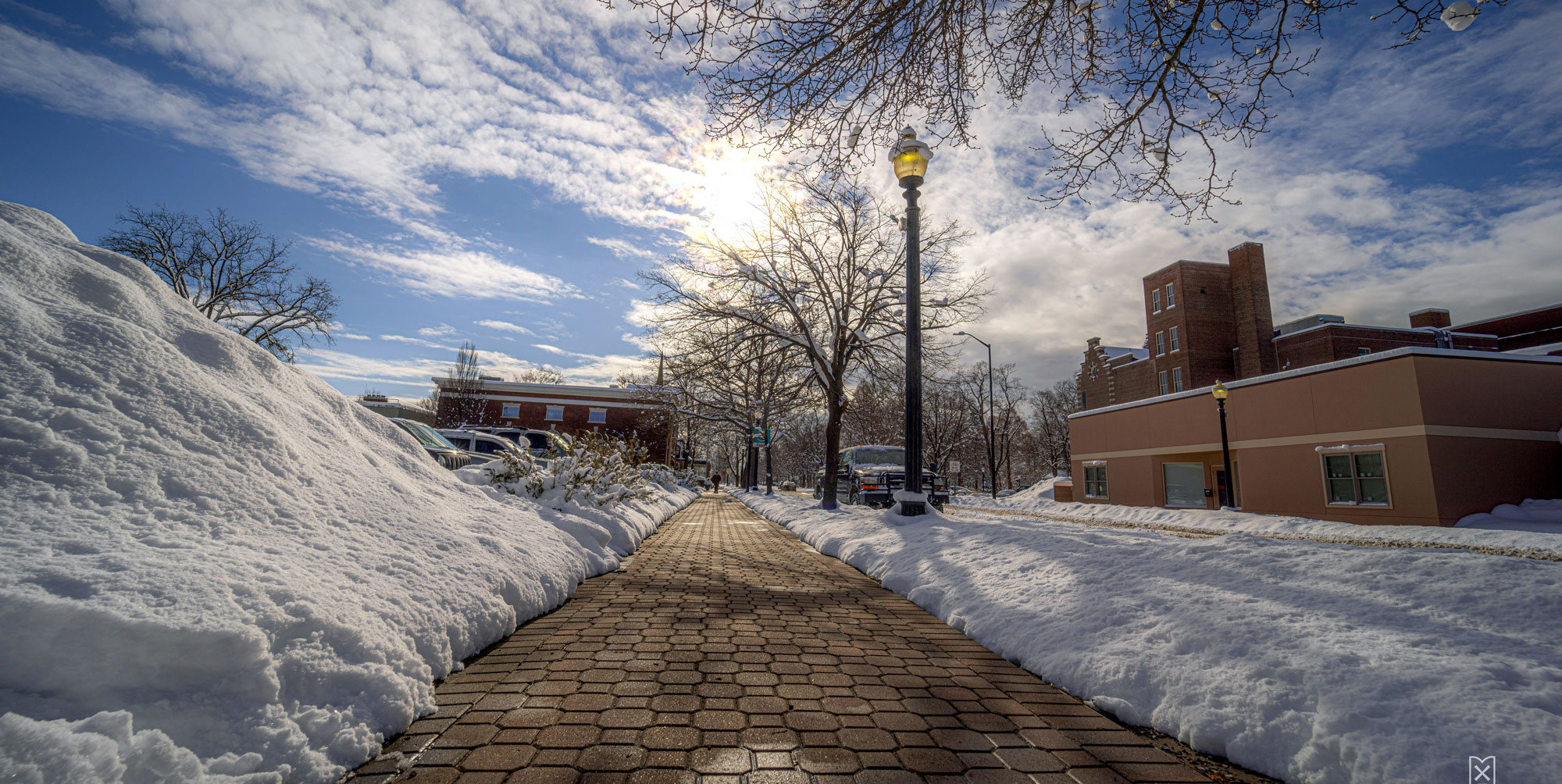
TOURISTS IN THIS MICHIGAN TOWN ARE UNDETERRED BY WINTRY WEATHER THANKS TO ITS NOW 35-YEAR-OLD SNOWMELT SYSTEM, THE FIRST OF ITS KIND IN THE UNITED STATES
Holland, Michigan’s downtown needed to turn up the heat.
In 1988, the city known for its Dutch heritage had just completed a project that restored downtown buildings to their historical charm and character, but merchants were fleeing to a nearby indoor mall that was being constructed.
Enter local industrialist Ed Prince, who had seen firsthand a snowmelt system in Europe and came back thinking the city should do the same thing for its streets and sidewalks. After exploring the possibility with the city’s Board of Public Works, Prince contributed $250,000 toward a $1.1 million project that would include a snowmelt system on 8th Street – downtown’s main drag – and streetscape repair.
“It was a long summer of tearing up the road and putting down the PEX tubes and doing all that stuff,” said Amy Sasamoto, coordinator for the city’s Downtown Development Authority, “but they did a lot of promotions, so people were pretty excited about it, and excited that we were going to be one of the few cities in the nation to do that.”
Al McGeehan, who was a city councilman at the time and later served as mayor, said it required a leap of faith.
“Back in 1988, when the idea was first launched, it was rocket science to us,” he told Michigan Radio in a 2016 interview. “We didn’t know anything about it. It had never been done before in the United States. We had no idea, number one, how it worked, how we could hook it up to our power plant. We had no idea how much it was going to cost to create, and the biggest question was, how much is it going to cost to operate it and maintain it?”
McGeehan said they ultimately decided to “dare to dream big” and proceed, and the costs were “much less than anybody had anticipated.”
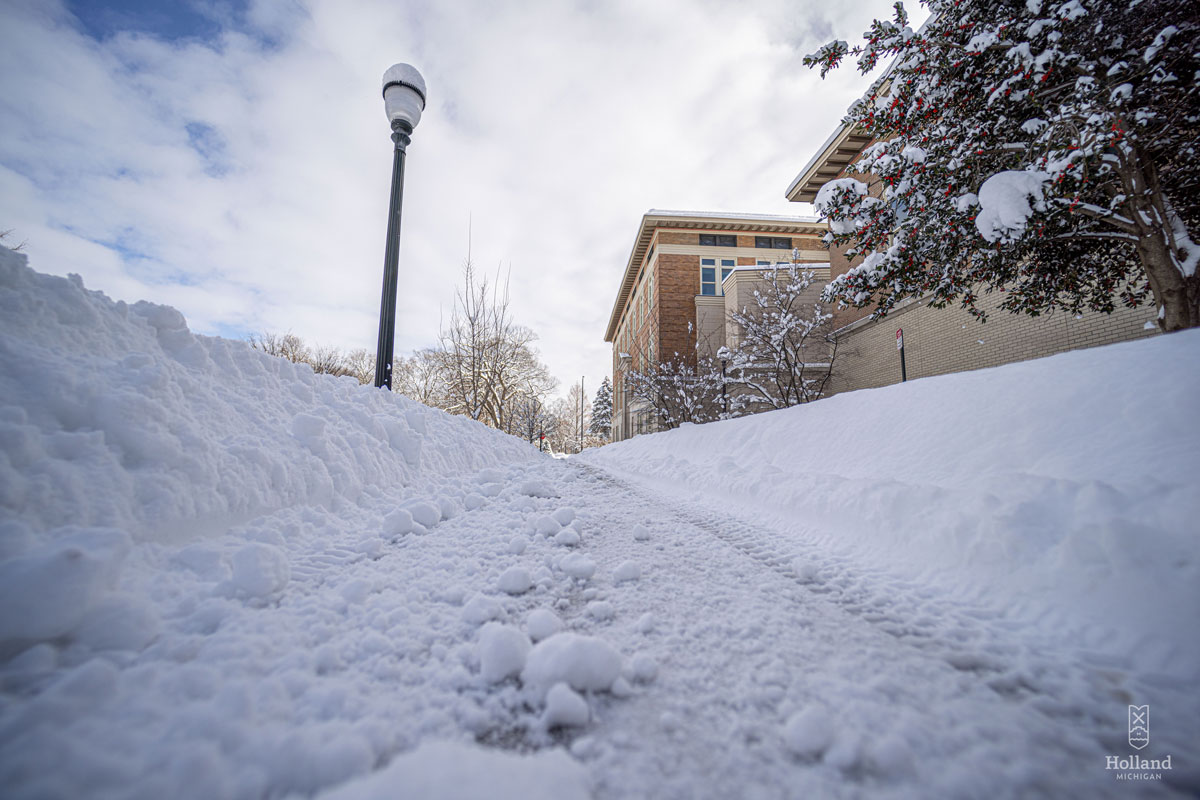
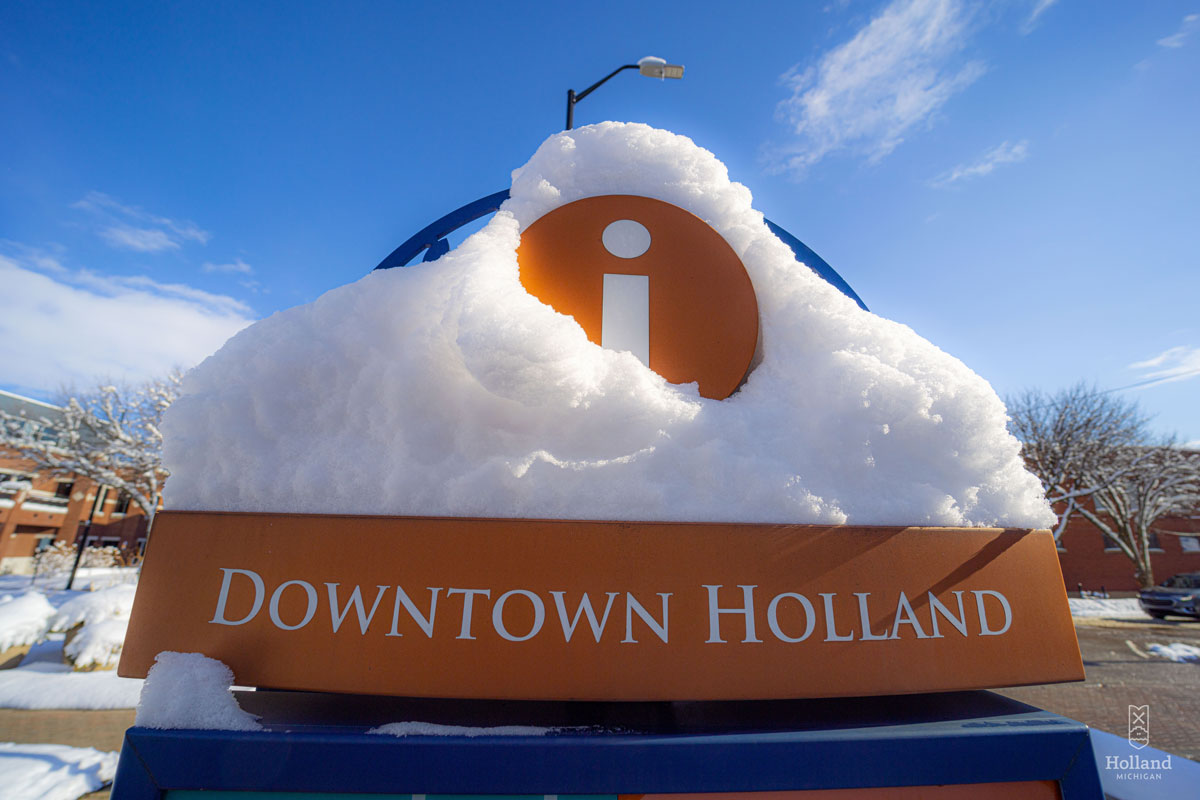
The city now boasts North America’s largest municipally run snowmelt system. By pumping more than 4,700 gallons of water per minute at 95 degrees, it can melt roughly an inch of snow per hour in 20-degree weather with 10 mph winds. Sasamoto estimated the chemically treated water in the closed-loop system returns about 20 degrees cooler.
Snow and ice melt systems were initially introduced into Appendix E, Sustainable Practices, in the 2012 edition of the Uniform Mechanical Code (UMC®). These provisions were also incorporated into Chapter 12, Hydronics, in the 2018 edition of the UMC. The latest requirements address the use of chemical additives and corrosive fluids; tubing installation practices; insulation; multizone systems; freeze protection; control devices; testing; and flushing.
The coverage area has expanded over the years, and Sasamoto said when the current expansion is completed later this year, it will encompass nearly 807,000 square feet and include 190 miles of PEX tubing.
Sasamoto said because expansion involves tearing up sidewalks and streets, the city looks for opportunities to do so during streetscape renovations.
“Right now our 6th Street is getting all redone,” she said. “Part of that process was getting everybody on board, so you have to convince people that it’s a worthwhile benefit to them. And the city does participate in that cost,” which she estimated at $300 per square foot for transmission and $40 per square foot for distribution.
Holland caught a huge break at the outset when it came to installing a snowmelt system: its municipal power plant is located downtown, so they can use the circulating water from the waste heat rather than a boiler system. Water initially came from Lake Macatawa, but now the city uses potable water from Holland Energy Park, which opened in 2017.
“There used to be a lot of sediment that could get into the PEX tubing,” Sasamoto said, “but since we changed to the natural gas plant, we haven’t had the leaks or the problems that we had originally.”
Switching to the natural gas plant also makes it possible to expand the system to four times the size it is now.
The sidewalks above the snowmelt system consist of brick pavers rather than cement so leaks can be more easily repaired, and sand gravel helps absorb water when the snow melts.
“We obviously put in asphalt in the roads and that’s a little bit easier than cement, but the brick pavers make all the difference,” Sasamoto said.
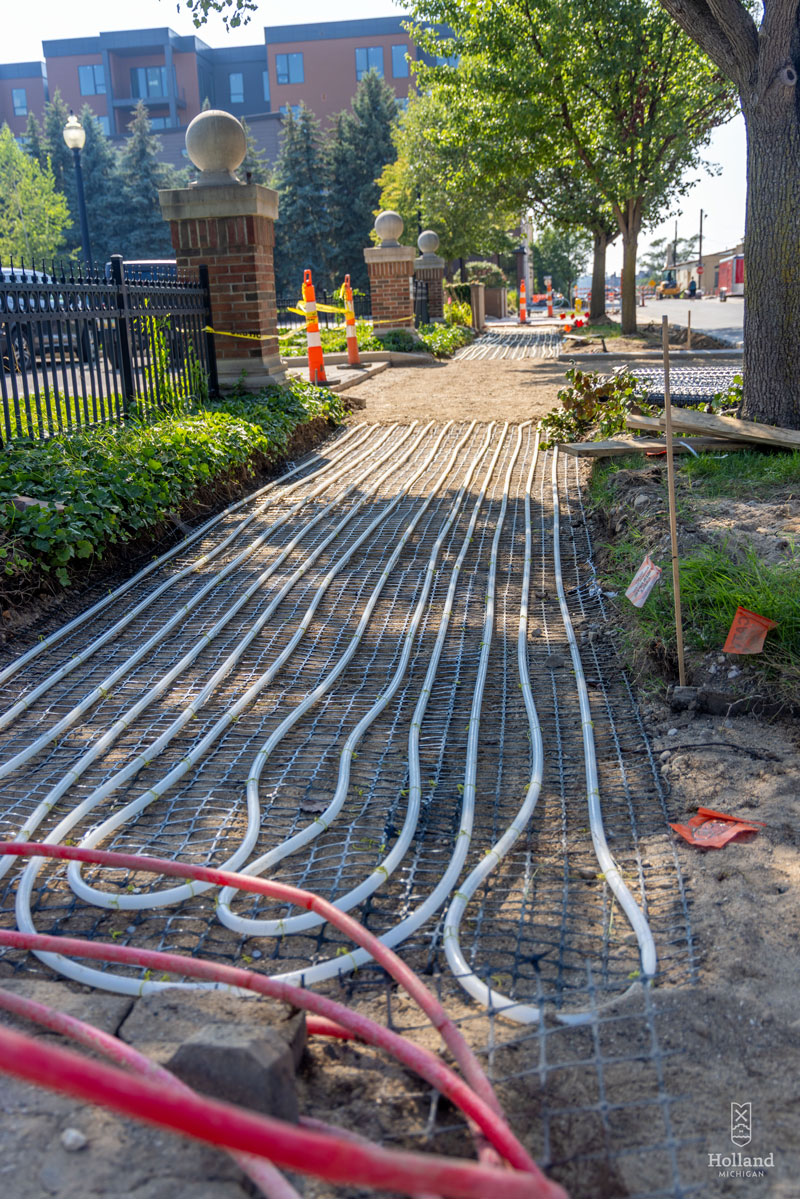

PHOTOS COURTESY OF CITY OF HOLLAND, MICHIGAN
There are advantages beyond the obvious safety benefits a snowmelt system brings. “We don’t have the salt, we don’t have the wear and tear, so it keeps our infrastructure longer. We don’t have to repave a lot of the roadway that it’s in that other places have to do. It’s also been a big part of bringing development to downtown Holland.”
Additionally, Sasamoto said, merchants don’t have to clean their carpets as often and vegetation does not suffer from salt that was previously used to melt snow.
Rather than charging residents for the snowmelt system, the city places an assessment on businesses that directly benefit from it; Sasamoto said the rate this year is 52 cents per square foot.
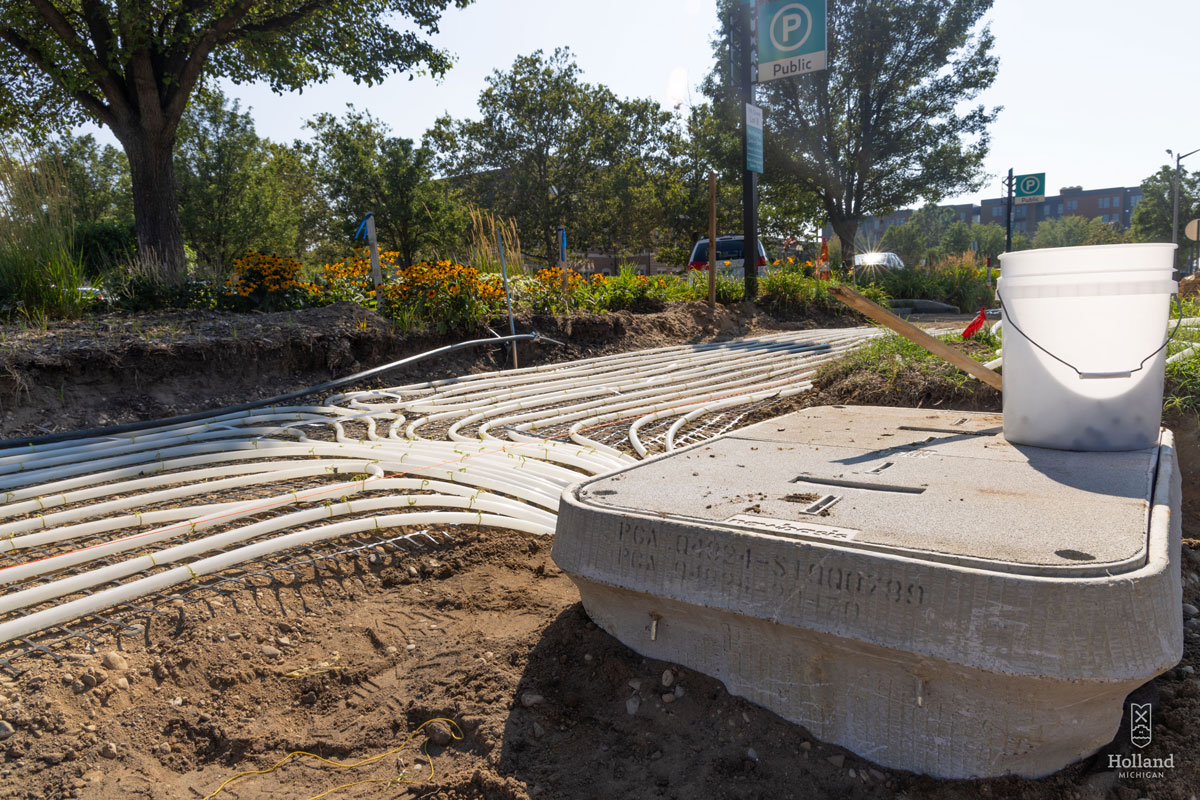

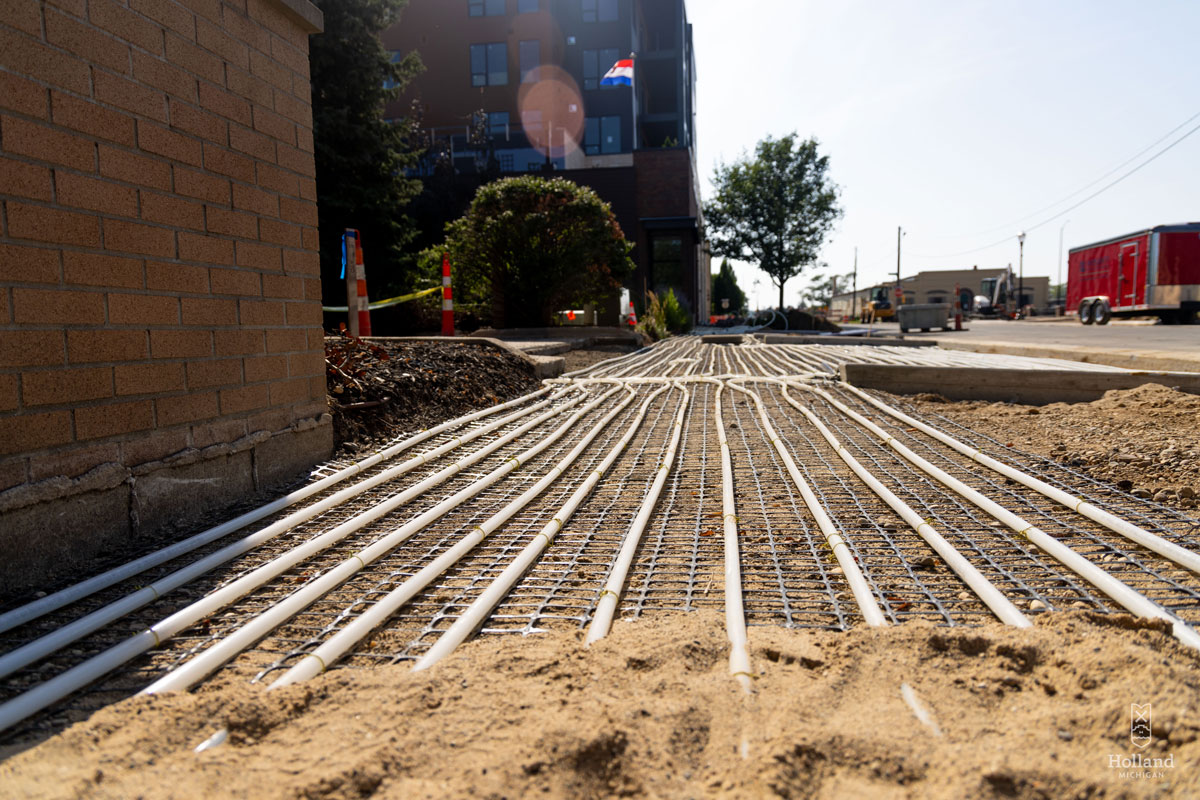
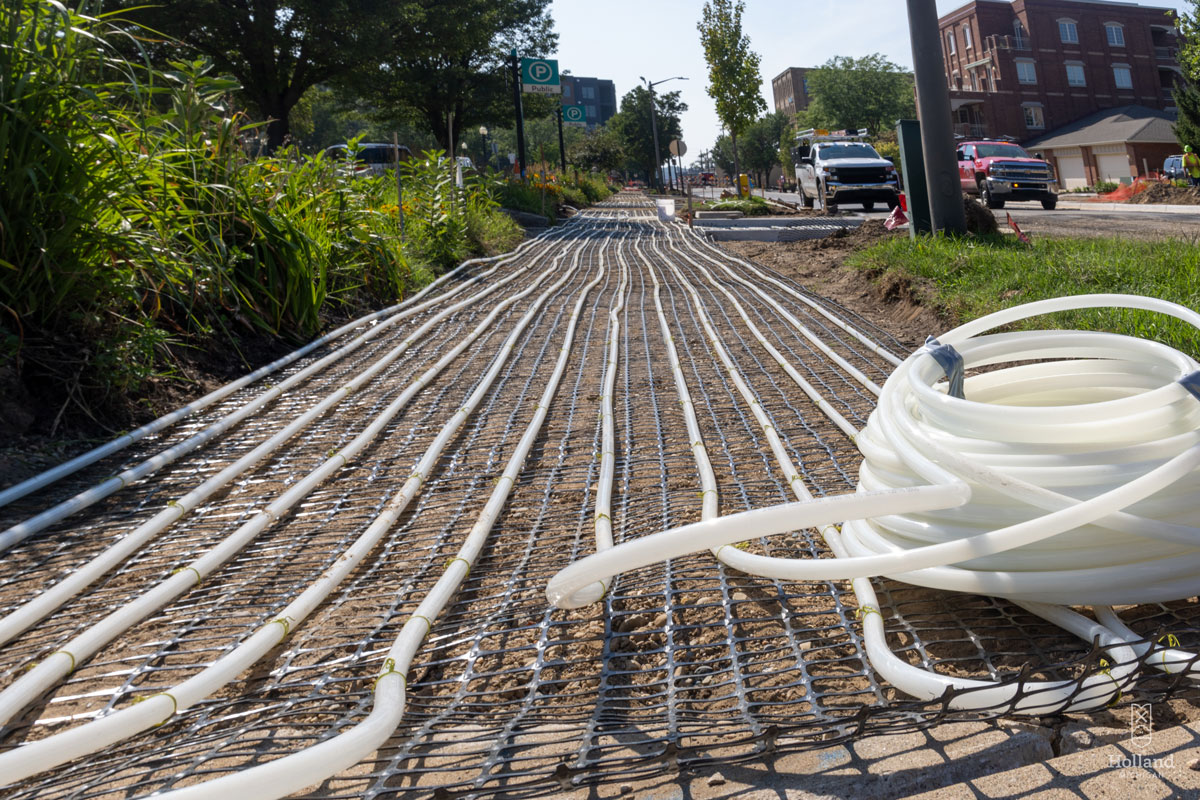
Although the first snow doesn’t typically come until early December, water circulates throughout the system year-round. For comparison’s sake, Sasamoto said the energy charge was $2,460 in February but only $27 in August.
“It’s on standby to run pretty much starting Dec. 1 – or earlier if it snows before that – until things start slowing down here in March,” she said.
Developers are familiar with the system and want to participate in it, Sasamoto said.
“It’s a great aspect of making us a year-round city rather than just a summer destination since we’re near Lake Michigan,” she said. “We get the same level of tourism in the wintertime that we get in the summertime.”
In addition to getting calls from other cities and municipalities — many of which are from Canada — Sasamoto said they get calls from residents who have become somewhat spoiled by the system. She said the system kept up pretty well with a winter storm last year, but they still heard from people who were checking in to make sure it was running as it should.
“We’ve made people so conditioned to snowmelt that if there is even half an inch, we get calls like, ‘Why isn’t snowmelt working?’” she said. “So then we have to explain to them, ‘It’ll work; it just needs to catch up.’”
Sharon Fisher, who owns Apothecary Gift Shop in downtown Holland, said the snowmelt system makes it easier for customers to shop during the winter season.
“You don’t have to climb over snow banks when you’re parking your car, you don’t slip and slide on the slippery sidewalks,” she said. “You don’t have to shovel for neighbors that don’t shovel their sidewalk at all.”

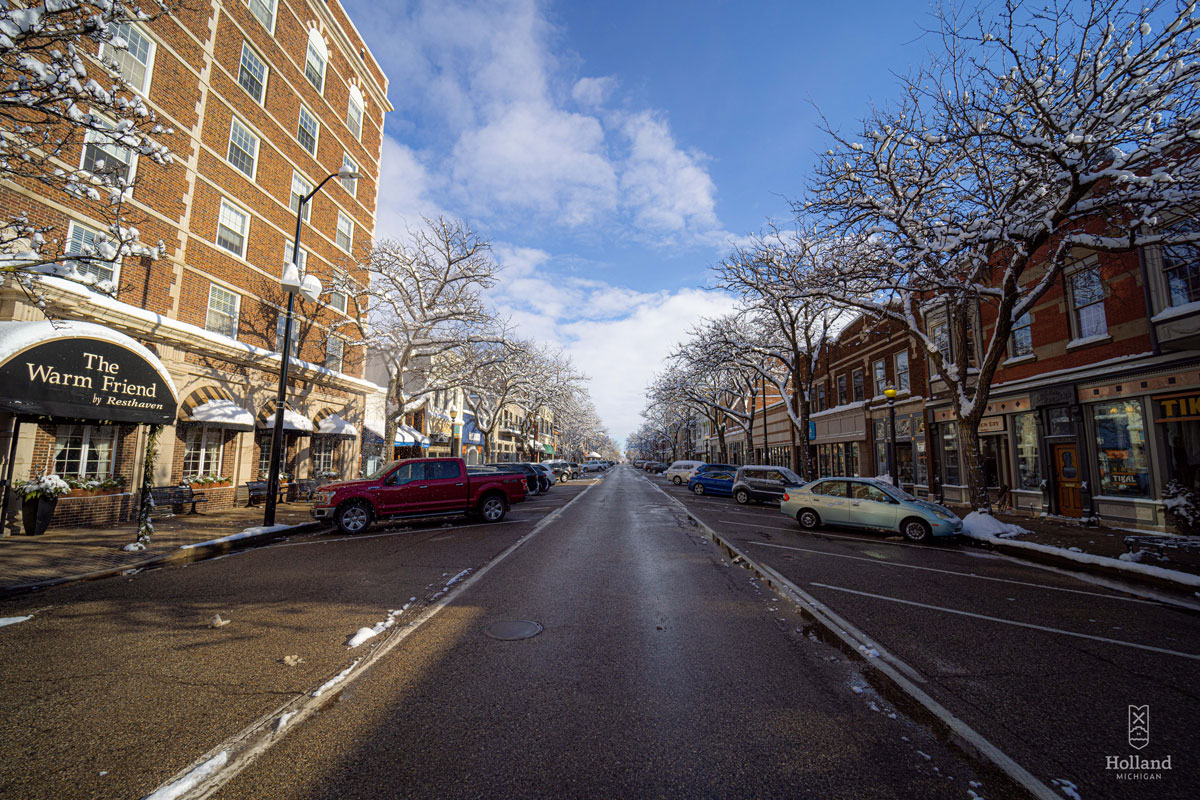
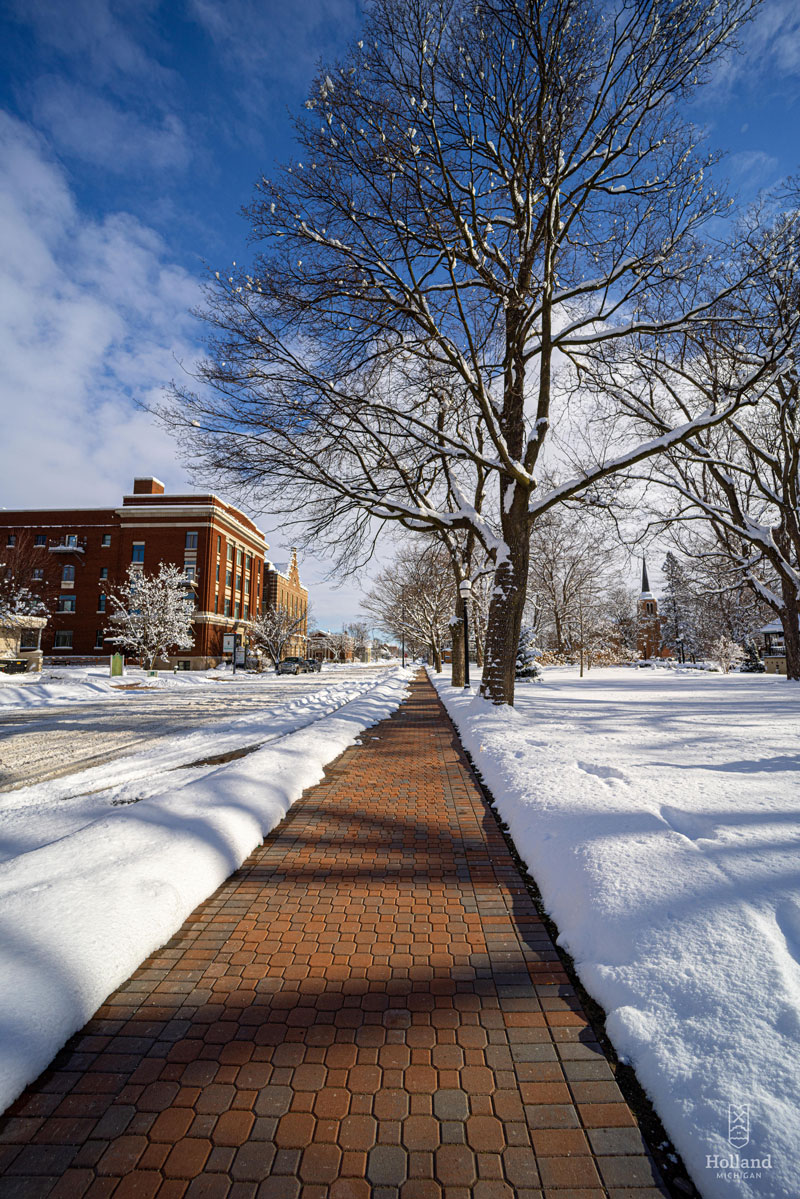
Fisher’s parents bought what was then called Model Drug store in 1961, and she bought it from them in 1999. The pharmacy was removed in 2015 and it was renamed Apothecary Gift Shop.
She said they didn’t know what to expect and whether it would work because such systems were not commonplace in the United States, but it has been well worth the gamble.
“Very much so,” Fisher said. “We get spoiled here. Go out to other cities that don’t have it during the winter months and it’s reality again.” Fisher said downtown Holland resembles a Hallmark town and it’s quite picturesque when steam is coming off the sidewalk while it’s snowing.
She praised those who had the foresight and courage to take that leap of faith 35 years ago. “It’s a good destination place nowadays,” Fisher said. “There were a lot of key people that planned for the future and now we’re seeing the benefit of it.”

Mike Flenniken
Mike Flenniken is a staff writer, Marketing and Communications, for IAPMO. Prior to joining IAPMO in 2010, Flenniken worked in public relations for a group of Southern California hospitals and as a journalist in writing and editing capacities for various Southern California daily newspapers.
Last modified: December 20, 2023
